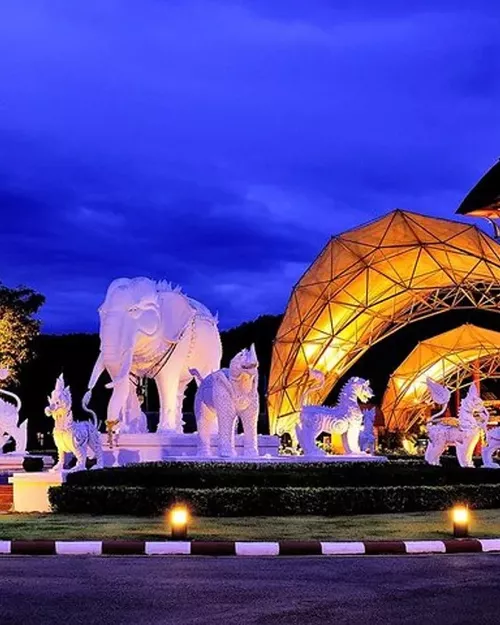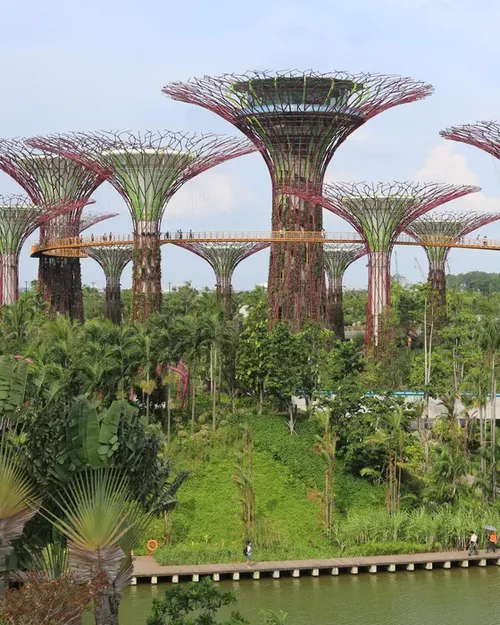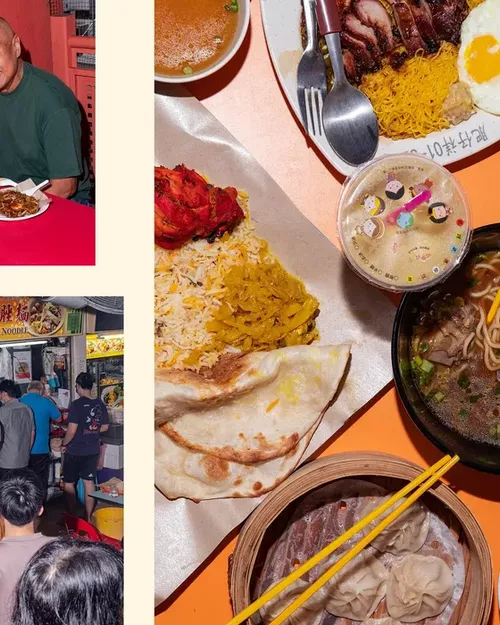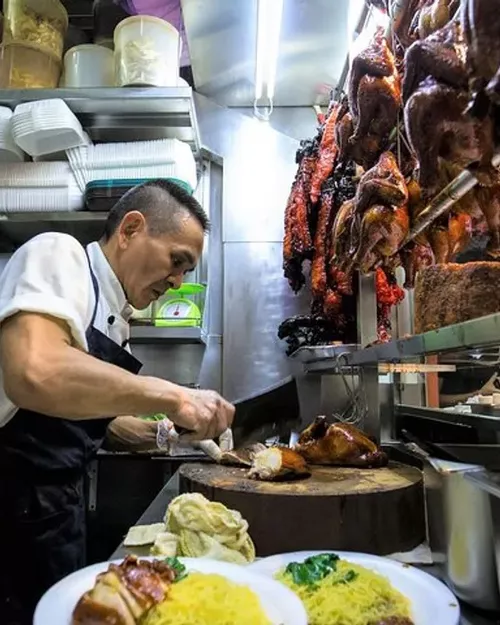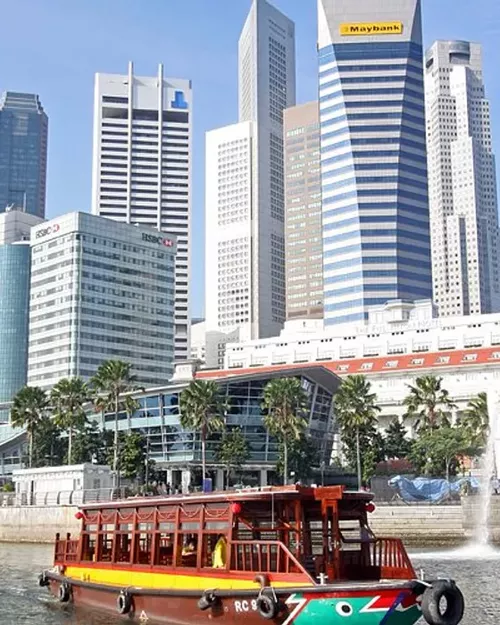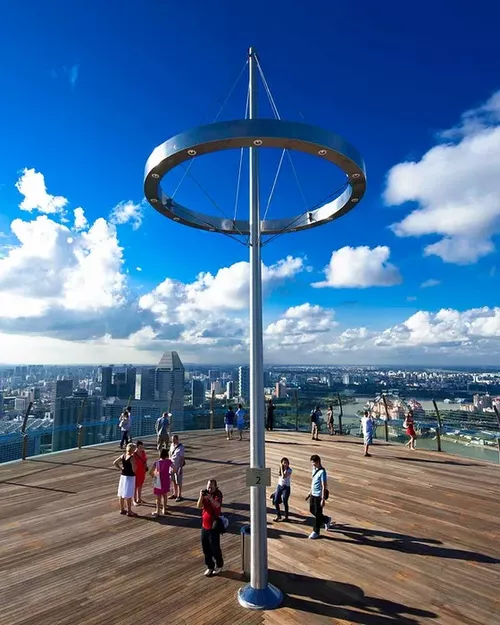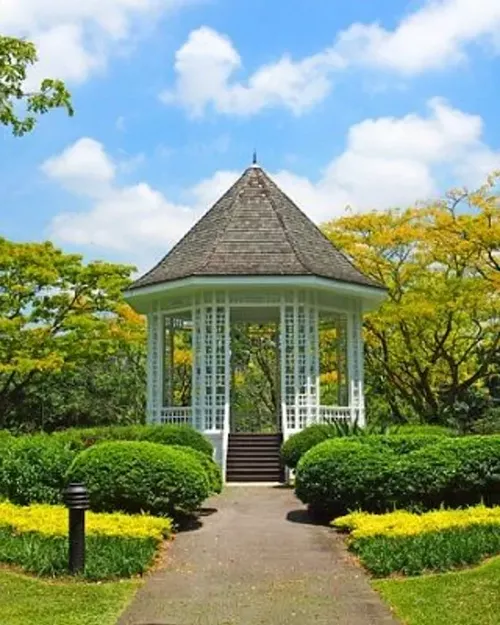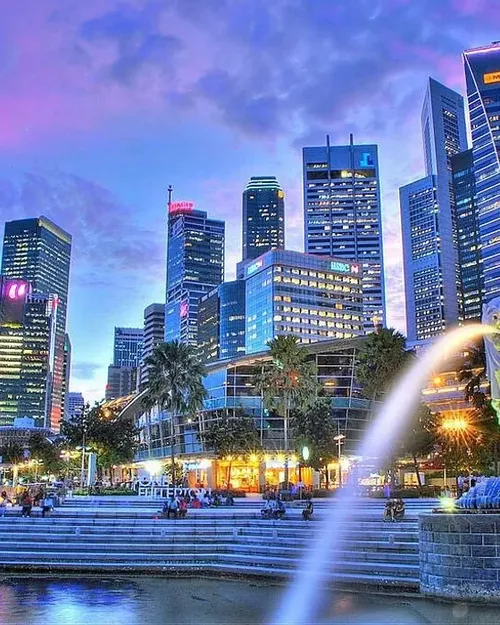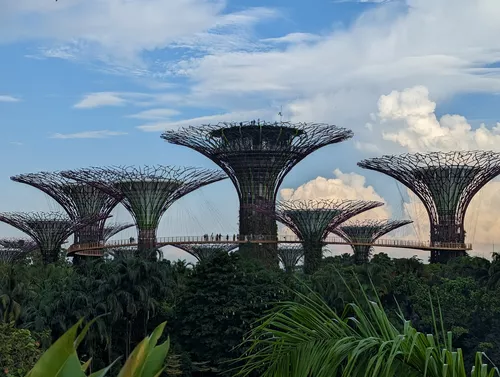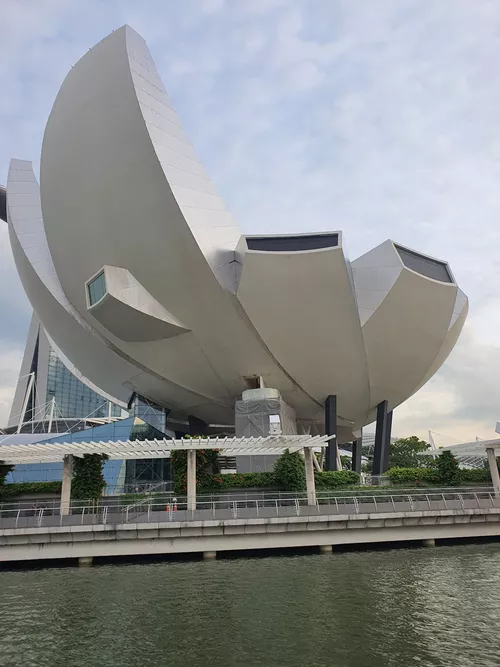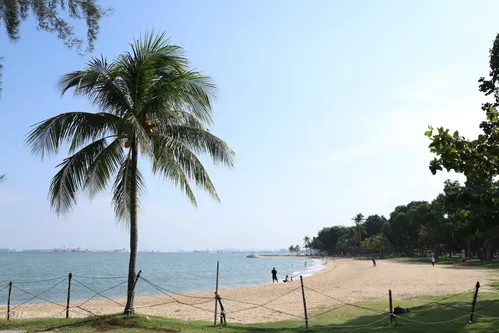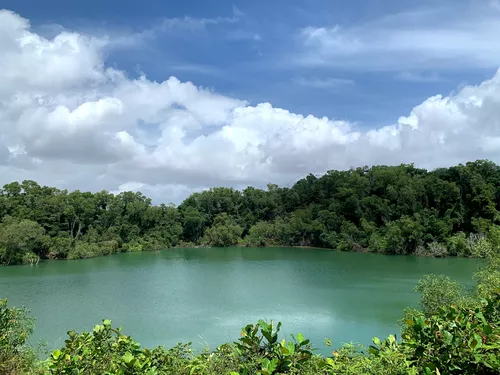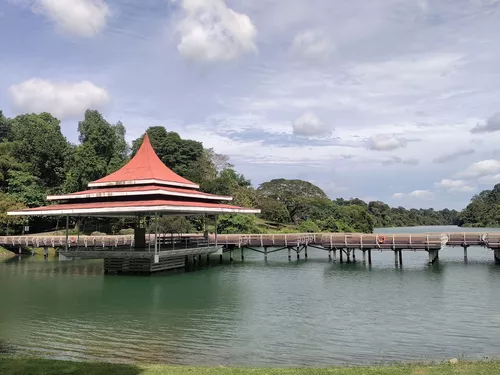Singapore is popular for
Singapore in next 3 month
Weather in Singapore
December in Singapore is slightly cooler with occasional rain showers and moderate air quality.
Usual trip duration
A 3-4 day trip to Singapore allows you to explore the iconic Marina Bay Sands, visit the beautiful Gardens by the Bay, experience the vibrant culture in Chinatown, and indulge in the delicious street food at hawker centers.
Moderately expensive
Ideas To Plan Your Trip
Places To Visit
Places To Eat
Frequently Asked Questions about Singapore
The best time to visit Singapore is generally from February to April. During these months, the weather is typically drier and less humid compared to other times of the year. This period falls outside the major monsoon seasons, which can bring heavy rainfall and thunderstorms. While Singapore is a year-round destination, visiting during February to April offers a more comfortable experience for exploring outdoor attractions and participating in various activities.
Additionally, this period often sees fewer crowds compared to the peak tourist seasons, such as school holidays and major events. This allows for a more relaxed and enjoyable visit to popular attractions like Gardens by the Bay, Sentosa Island, and the Singapore Zoo. Keep in mind that Singapore's weather can be unpredictable, so it's always wise to check the forecast before your trip and pack accordingly.
Singapore boasts a diverse range of attractions catering to different interests. Here's a list of some must-visit places:
| Attraction | Highlights |
|---|---|
| Gardens by the Bay | Iconic Supertrees, Cloud Forest, Flower Dome, and OCBC Skyway. |
| Marina Bay Sands | Integrated resort with an infinity pool, observation deck, casino, and shopping mall. |
| Sentosa Island | Beaches, Universal Studios Singapore, S.E.A Aquarium, Adventure Cove Waterpark, and various other attractions. |
| Singapore Zoo | Award-winning zoo known for its open-concept design and diverse wildlife. |
| Chinatown | Historic district with temples, traditional shops, and delicious food. |
| Little India | Vibrant cultural enclave with temples, spice markets, and textile shops. |
| National Museum of Singapore | Showcases Singapore's history and culture through interactive exhibits. |
Consider purchasing a Singapore Tourist Pass for unlimited travel on public transport to make exploring these attractions easier.
Singapore is a major transportation hub in Southeast Asia, making it easily accessible from various international destinations. Here are the primary ways to reach Singapore:
| Mode of Transport | Details |
|---|---|
| By Air | Changi Airport (SIN) is one of the world's best airports, serving numerous international airlines. It offers direct flights to major cities worldwide. From the airport, you can reach the city center by taxi, MRT (Mass Rapid Transit), or bus. The MRT is the most cost-effective option. |
| By Sea | Singapore Cruise Centre welcomes cruise ships from various countries. The cruise terminal is well-connected to the city center by taxis and public transport. |
| By Land (from Malaysia) | You can travel to Singapore from Malaysia via the Causeway or the Second Link. Buses and trains operate between Johor Bahru (Malaysia) and Singapore. It's essential to check visa requirements and immigration procedures. |
Changi Airport's efficient connectivity and world-class services make flying the most common and convenient way to reach Singapore.
Singapore offers a plethora of activities beyond the typical tourist attractions. Here are some popular options:
- Hawker Food Tour: Explore Singapore's diverse culinary scene by visiting local hawker centers and trying various dishes like Hainanese chicken rice, laksa, and chili crab.
- Night Safari: Experience the world's first nocturnal zoo and observe animals in their natural habitats at night.
- River Cruise: Take a bumboat ride along the Singapore River and enjoy the illuminated skyline.
- Cooking Class: Learn to prepare authentic Singaporean dishes and impress your friends and family back home.
- Water Sports: Enjoy various water sports activities at Sentosa Island, such as jet skiing, paddleboarding, and kayaking.
- Hiking: Explore Singapore's green spaces by hiking in nature reserves like MacRitchie Reservoir or Bukit Timah Nature Reserve.
- Art and Culture: Visit art galleries, museums, and cultural centers to immerse yourself in Singapore's vibrant arts scene.
These activities provide a deeper insight into Singapore's culture, cuisine, and natural beauty, offering a memorable travel experience.
While Singapore itself offers plenty to see and do, several nearby destinations are worth considering for day trips or short getaways:
| Destination | Travel Time | Highlights |
|---|---|---|
| Johor Bahru, Malaysia | 1-2 hours (by bus or train) | Legoland Malaysia, shopping malls, and local cuisine. |
| Batam Island, Indonesia | 1 hour (by ferry) | Beaches, golf courses, spas, and duty-free shopping. |
| Malacca, Malaysia | 3-4 hours (by bus) | UNESCO World Heritage Site with historic buildings, museums, and Peranakan culture. |
| Pulau Ubin, Singapore | 15-minute bumboat ride from Changi Point Ferry Terminal | Rustic island with traditional kampongs (villages), mangrove forests, and cycling trails. |
These destinations offer diverse experiences and can be easily accessed from Singapore, providing a change of scenery and a glimpse into neighboring cultures.
Singapore is a shopper's paradise, offering a wide range of retail experiences from luxury boutiques to budget-friendly markets. Here are some of the best shopping spots catering to different tastes and budgets:
| Shopping Area | What to Expect | Ideal For |
|---|---|---|
| Orchard Road | Luxury boutiques, department stores, flagship stores of international brands. | High-end fashion, cosmetics, and electronics. |
| Haji Lane | Indie boutiques, vintage shops, and trendy cafes. | Unique fashion, accessories, and souvenirs. |
| Chinatown Street Market | Souvenirs, traditional Chinese products, street food. | Bargain hunters and souvenir shoppers. |
| Little India | Textiles, spices, jewelry, and traditional Indian products. | Ethnic wear, spices, and cultural items. |
| VivoCity | Large shopping mall with a wide range of stores, restaurants, and entertainment options. | General shopping and family entertainment. |
Whether you're looking for luxury goods, unique finds, or budget-friendly souvenirs, Singapore has a shopping destination to suit your needs.
Singapore is a culinary paradise, offering a diverse range of dining experiences from hawker stalls to Michelin-starred restaurants. Here are some highly recommended options for tourists:
| Cuisine/Experience | Restaurant/Location | Why it's Recommended |
|---|---|---|
| Hawker Food | Liao Fan Hong Kong Soya Sauce Chicken Rice & Noodle (Michelin-starred hawker), Tian Tian Chicken Rice (Maxwell Food Centre) | Authentic Singaporean dishes at affordable prices. |
| Chili Crab | Jumbo Seafood, Long Beach Seafood Restaurant | Singapore's national dish, a must-try for seafood lovers. |
| Fine Dining | Odette (French cuisine), Les Amis (French cuisine) | Michelin-starred restaurants offering exquisite culinary experiences. |
| Peranakan Cuisine | Candlenut, True Blue Cuisine | Unique blend of Chinese and Malay flavors. |
| Rooftop Bars | 1-Altitude, Ce La Vi | Enjoy cocktails with stunning views of the city skyline. |
Don't miss the opportunity to explore Singapore's diverse culinary scene and indulge in its unique flavors.
The official currency of Singapore is the Singapore Dollar (SGD). It is denoted by the symbol '$' or 'S$' to distinguish it from other dollar currencies. Singapore Dollars are available in denominations of S$2, S$5, S$10, S$50, S$100, S$1,000, and S$10,000 notes, as well as coins of 5, 10, 20, 50 cents, and S$1.
You can exchange money at various locations throughout Singapore:
- Changi Airport: Currency exchange counters are available in the arrival and departure halls.
- Money Changers: Licensed money changers are located in shopping malls, such as Mustafa Centre (open 24 hours), and in the Central Business District. They often offer better exchange rates than banks.
- Banks: Banks such as DBS, OCBC, and UOB provide currency exchange services.
- Hotels: Some hotels offer currency exchange services, but the rates may not be as competitive as money changers.
It is advisable to compare exchange rates at different locations before exchanging your money to get the best deal. Credit cards are widely accepted in Singapore, but it's always a good idea to have some cash on hand for smaller establishments and hawker centers.
Singapore is a multicultural society, and respecting local customs and traditions is essential for a pleasant visit. Here are some cultural etiquette tips to keep in mind:
- Dress Code: Singapore is generally conservative in its dress code. While casual wear is acceptable, avoid wearing revealing clothing, especially when visiting religious sites.
- Eating Etiquette: When eating with chopsticks, avoid sticking them upright in your rice bowl, as this resembles incense offerings for the deceased. It is also polite to wait for the host to start eating before you do.
- Public Behavior: Avoid public displays of affection (PDAs), such as excessive kissing or hugging. It is also considered impolite to point your finger at someone.
- Tipping: Tipping is not customary in Singapore, as most restaurants and hotels already include a service charge in the bill.
- Photography: Be mindful of taking photos in religious sites and ask for permission before photographing people.
- Shoes: Remove your shoes before entering temples and some homes.
- Cleanliness: Singapore is known for its cleanliness, so avoid littering and dispose of your trash properly.
- Respect for Elders: Show respect for elders by offering them your seat on public transport and addressing them with appropriate titles (e.g., Uncle, Auntie).
By observing these cultural etiquette tips, you can ensure a respectful and enjoyable experience in Singapore.
Singapore hosts a vibrant array of festivals and events throughout the year, reflecting its multicultural heritage. Here are some of the most popular:
| Festival/Event | Month(s) | Description |
|---|---|---|
| Chinese New Year | January/February | Celebration of the lunar new year with lion dances, street markets, and festive decorations. |
| Thaipusam | January/February | Hindu festival where devotees carry kavadis (ornate structures) in a procession. |
| Singapore Food Festival | July | Showcase of Singapore's diverse culinary scene with food stalls, cooking demonstrations, and themed events. |
| National Day | August | Celebration of Singapore's independence with a grand parade, fireworks, and cultural performances. |
| Mid-Autumn Festival | September/October | Celebration with lantern displays, mooncakes, and family gatherings. |
| Deepavali | October/November | Hindu festival of lights with colorful decorations, traditional sweets, and fireworks. |
| Christmas | December | Festive decorations, Christmas markets, and special events throughout the city. |
Attending these festivals and events provides a unique opportunity to experience Singapore's culture and traditions firsthand.
Singapore can be an expensive city, but there are plenty of free activities to enjoy without breaking the bank. Here are some ideas for budget-conscious travelers:
- Gardens by the Bay (Outer Gardens): Explore the stunning Supertrees and enjoy the scenic views of Marina Bay. Admission to the outer gardens is free.
- MacRitchie Reservoir Park: Hike through lush rainforest and enjoy panoramic views of the reservoir.
- Southern Ridges: Walk along a 10-kilometer trail connecting several parks and enjoy scenic views of the city and surrounding areas.
- National Museum of Singapore (Free exhibits): Check for free admission days or visit the free exhibits showcasing Singapore's history and culture.
- Esplanade - Theatres on the Bay: Enjoy free performances and events at the Esplanade, a waterfront arts center.
- Buddha Tooth Relic Temple and Museum: Visit this stunning temple in Chinatown and admire its intricate architecture.
- Haw Par Villa: Explore this quirky and thought-provoking theme park featuring statues depicting Chinese mythology and folklore.
- Singapore Botanic Gardens: Wander through lush gardens and enjoy the tranquility of this UNESCO World Heritage Site.
- Watch the Spectra Light & Water Show: This free outdoor show at Marina Bay Sands combines colorful light projections, water fountains, and music.
With a little planning, you can experience the best of Singapore without spending a fortune.
Singapore has an excellent public transportation system that is both efficient and affordable. Here are the best ways to get around:
| Transportation Mode | Details | Cost |
|---|---|---|
| MRT (Mass Rapid Transit) | Extensive subway network covering most parts of the city. | S$0.83 - S$2.07 per trip (depending on distance) |
| Buses | Comprehensive bus network supplementing the MRT. | S$0.83 - S$2.07 per trip (depending on distance) |
| Taxis | Easily available, especially at taxi stands and through ride-hailing apps. | Flag-down fare S$3.20 - S$3.90, plus metered charges. |
| Ride-Hailing Apps (Grab, Gojek) | Convenient for booking rides on demand. | Variable pricing depending on demand. |
For tourists, the Singapore Tourist Pass offers unlimited travel on the MRT, buses, and LRT (Light Rail Transit) for a fixed price. This can be a cost-effective option if you plan to use public transport extensively. You can also use a contactless credit card or purchase an EZ-Link card for easy payment on public transport.



